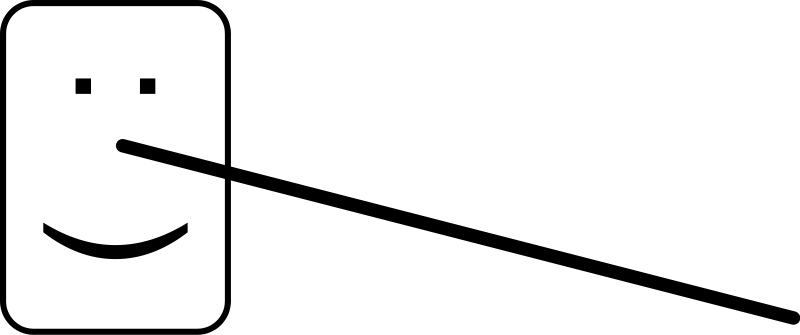Here is a sample from my work-in-progress, Army of Worn Soles,
based on the true story of my father-in-law, who was drafted into the Red Army in 1941, just before the Germans invaded. He fought across Ukraine, was captured, escaped a POW camp and made his way home.
This chapter, "Battle at Poltava," is based on his descriptions of fighting as well as historical research.
Let me know what you think.
Kyiv was gone.
The rumours arrived well before the
official news. On September 17, 1941, Stalin finally gave the
permission to General Kirponov that he had denied Marshall Budenny:
to withdraw from Kyiv. Once the orders went out to withdraw behind
the Dnipro River, the Germans pounced and took control of the city in
less than 24 hours.
The withdrawal order had come too late.
“Hurrying Heinz” Guderian, the great Panzer general, had already
crossed the Dnipro in Belorussia in late August and had penetrated
far east of the Ukrainian capital, to the area around Romny. General
Ewald von Kleist blasted past the Dnipro south of Kyiv by September
10, and on the 14, the two generals shook hands 100 miles east of
Kyiv—having trapped five Soviet armies, nearly a million men, in
the huge pocket between their forces.
It had not been the first time, nor
would it be the last: the Soviet 6th and 12th
armies had been encircled and trapped in the “Uman Pocket” in
mid-August; and after the wehrmacht’s
capture of Minsk in July, they had captured another five Soviet
armies.
There were many
reasons for the Soviets’ collapse; they continued to reel from the
shock of Nazi Germany’s surprise attack on June 22; the Red Army
was unprepared for modern war; and Stalin refused, over and over
again, to allow strategic withdrawals that would have allowed the Red
Army to shore up defences further back from the invaders. Stalin
instead ordered every man to fight to the death, to not give in to
the enemy. Hundreds of thousands of soldiers died, were trapped and
taken prisoner, or, despairing, surrendered, guns and tanks an armour
intact.
Gereral
Kirponos, head of the Soviet 5th
Army, had fought hard to break out of the encirclement in September,
but was killed by a land mine. A few in his army managed to break
out.
Part
of the 38th
Army under newly-appointed Major-General Vladimir Tsiganov managed to
escape the Kyiv encirclement, and Maurice and his men joined it,
heading south-east to defend the bridgeheads between Cherkassy and
Kremenchuk. The Germans send more panzer divisions, and in October,
the remnants of the army pulled back another 100 kilometres and dug
into the eastern banks of the shallow Psyol river to protect Poltava,
where Marshall Timoshenko had his headquarters.
Maurice’s unit
took shelter in trenches that had been built by the locals, but there
were no bunkers this time. Food delivery became sporadic and the men
griped continually about the autumn rain, the way the soft soil of
the trench walls crumble, the bad and inadequate food. But they could
not indulge in this long—the Panzers kept coming.
They stayed awake
all night, squinting west across the Psyol River to the invisible,
continuous rumble of heavy vehicles. Some of the men prayed.
Commissars and officers moved up and down the lines, inspecting and
admonishing the soldiers to vigilance and readiness. “At the first
sign of the Germans, we counter-attack,” they said.
Maurice doubted it.
That first sign
came at dawn. As the sky greyed behind the Soviets, the early light
picked out German tanks advancing along the roads, cautious yet
swift.
Fear spread from
Maurice’s heart through his body and along his arms and legs. His
fingers tingled as the rising sun revealed columns of armoured
vehicles and marching men, of officers’ staff cars and motorized
cannons, lines that stretched for miles. The German army moved in
unison, fast and alert like a single predator, fearless.
Two Panzers
ventured onto a small wooden bridge. They weren’t even fazed when
the bridge collapsed under their weight. The water didn’t reach
over the tops of their treads, and they just down-shifted and
continued.
An officer shouted
to Maurice’s right and anti-tank guns fired. Shells burst on the
lead Panzer and flames erupted around the turret, but didn’t damage
the tank. Its machine gun fired and then its cannon barked. Maurice
saw Red soldiers’s bodies fling up out of the destroyed trenches.
“Fire!” he
ordered and Orest pulled the trigger, but the shell went wide.
“Reload!” Machine guns fired from behind and then a German
armoured car carrying dozens of soldiers exploded. Bodies hit the
ground and bobbed in the water.
Maurice’s
men fired again, and this time they hit a tank front-on. The shell
stuck, burned into the metal plate and burst, but did not penetrate
the armour. The tank reversed gears and drew back from the riverbank.
The
Panzers halted on the west bank, waiting for something. Then shells
fell behind the Soviet lines, bursting and burning among the men. The
Germans, prepared for everything, were firing heavy guns at the
resistance.
“Down,
boys!” Maurice said, pulling his helmet as low as he could. It’s
hopeless, he thought. If a shell doesn’t land in this trench and
kill us all, it’ll only be sheer luck.
Soviet
guns answered, sporadic and uncoordinated. They were only aimed
generally westward, in contrast to the German shells, which seemed
demonically guided to Red Army targets.
When
the heavy fire let up after what felt like hours, Maurice chanced a
look over the trench. The German tanks were advancing again.
Somewhere, an anti-tank gun fired, hitting the lead Panzer square on.
The explosion blew its treads off and it lurched sideways into the
river, crippled, smoke pouring from its front plate.
More
Panzers kept coming, splashing through the river; behind them came
soldiers, running from cover to cover, firing their fast submachine
guns. As they climbed onto the near bank, some hit land mines and
fell, crippled, but more Panzers drove around them.
“Pull
back!” Maurice yelled, and the boys picked up the gun and
ammunition and ran, crouching low as they could to the next trench,
where they joined several other odalenje. Maurice’s boys
hurriedly set up the gun and aimed at the Panzers.
They
were too late: the Panzers swept past them, crushing wounded men
under their treads. The boys swung the gun around. “Aim at its
back!” Maurice ordered. “FIRE!”
The
gun barked and the shell hit the Panzer’s cylindrical tuel tank,
oddly exposed on its rear deck behind the turret. They explosion
Maurice continued to ring in Maurice’s ears for minutes. The tank’s
rear end lifted high and Maurice thought it would flip over. Shards
of metal flew in every direction and the tank’s hull split and
burned.
The
Panzers halted and Maurice saw the Soviet infantry charge, advancing
in a line, running fast and shooting their rifles. A hundred must
have been cut down by German machine guns.
By
now, the battlefield was full of smoke from explosions and gunfire,
from burning tanks, cars and trucks, from burning trees and grass.
Behind the black clouds, the sun rose, red.
“Rifles
ready, boys,” Maurice ordered, but he wouldn’t order them to
charge before he absolutely had to. Let the commissar threaten me
with a pistol, first, he thought. Another wave of Red soldiers
charged forward and were cut down in turn. A third wave came forward,
tripping over the corpses of their comrades. Time after time, the Red
Army charged, sending men with obsolete rifles against the unmatched
German machine guns that fired rounds at triple the rate of the few
Soviet machine guns. Soldiers fell like wheat before invisible
scythes. But they kept charging. A few stopped for a moment to fling
grenades or molotov cocktails, which burst and flamed on the Panzers.
It didn’t look like much, but gasoline burns too hot for the men
inside the tanks to tolerate. The crews threw open the hatches and
tried to escape, dying as Maurice’s men emptied their rifle
magazines.
Panzer
machine guns strafed the Soviet lines, and then the German infantry
arrived, charging across the Psyol River on foot or on speedy
armoured cars. The soldiers hid behind anything they could find for
cover, gradually creeping up on their tanks. They jumped behind any
cover they could find, fired to cover their comrades ahead or behind
them, leapfrogging toward the Soviet lines. They jumped into the
first line of trenches the Soviets had abandoned minutes earlier and
set up machine guns that added to the fire.
That
was when the Colonel ordered the cavalry to charge. It was like
something out of a movie: men on horses, capes flapping behind them,
swinging curved sabres or firing machine guns. They fell on the
German infantry, hacking at the men. They tumbled over their horses’
necks as the enemy shot the horses dead, or were blown out of their
saddles by bullets and explosives.
“Load
the high-explosive shells,” Maurice ordered his men. They fired at
the advancing Germans and the explosions ripped them apart. Maurice’s
boys fired round after round, and then ducked low as the German
machine gun fire came toward them.
A
commissar appeared among them and ordered the unit to their right to
charge the Germans. Maurice saw the fear on the faces of the
soldiers. None of them were even 20 years old. They cradled their
rifles and stared wide-eyed at the carnage on the fields. An officer
ordered “Charge!”
and they scrambled over the lip of the trench. Maurice watched as boy
after boy was hit by bullets and shrapnel. Raw recruits with little
or no training, they clustered together, firing sporadically at
anything that moved. A shell — German or Soviet was impossible to
say — burst in their midst, killing at least six at once.
Beyond
them, Maurice could see a group of German soldiers creeping through
the smoke. They lay on the ground, crawling on their bellies, until
they stopped in a line, guns aimed at the odalenje that had climbed
out of the trench.
Another
German group crept closer just beyond the first, aiming their
submachine guns, then halted until the first group crept past them.
Alternately, the came closer and closer to the Soviet lines.
“Aim
your rifles at Fritz over there,” Maurice ordered. The Red unit
that had been ordered to charge were between them and the enemy. They
crouched, stupidly, in the middle of the field, exposed to fire from
all sides. While some fired their rifles occasionally, they appeared
frozen. They just didn’t know what to do. They didn’t even see
the enemy crawling toward them.
Someone
shouted behind Maurice: a sergeant at a machine gun behind him was
trying to communicate with the young soldiers. “Get down! Get out
of the way! You’re blocking my fire, you idiots!” But the boys
didn’t hear him over the roar of battle, and even if they had,
Maurice doubled whether they’d have known where to go without their
commander. “Get down!” the soldier yelled again; it was futile.
Maurice
tried: “Tet back to the trench!” But they remained where they
were, shooting occasionally, frozen with fear. One by one, they
caught bullets and fell, sometimes screaming.
The
Germans kept coming and then Maurice could see their objective: a
heavy anti-tank gun that was firing as fast as its crew could reload.
It had been placed too close to the front line, and as the infantry
had fallen back from the first trench to the second, it had been
stranded. Still, it was taking a toll on the Panzers and armoured
car, and that was why this group of German soldiers had been ordered
to take it out. As they moved closer to the gun, the stranded group
of Russian boys was ever more directly between them and the Soviet
guns.
The
sergeant behind Maurice screamed frantically at the boys to get out
of the way. Maurice and all his boys yelled, too, but it was no use.
Then two of the Germans raised themselves just enough to throw
grenades.
Pop-pop-pop-pop!
The
machine gun behind Maurice fired. Bullets ripped up the grass between
him and the crawling Germans, and one with a grenade in his hand fell
forward. Seconds later, the grenade went off in his hand and he
disappeared in a cloud of smoke and soil. The other grenadier
flattened himself on the ground, then twisted as the machine gun tore
into his body.
The
other Germans turned their fire toward the machine gun, and
incidentally on the company of young soldiers between them. Sick to
his stomach, Maurice could only watch as the unit was torn to pieces
by fire from both sides. He knew that the machine gun sergeant could
not wait anymore — saving the anti-tank gun meant saving a lot more
lives than one odalenje that, exposed to fire from all sides, was
fated to be cut down sooner or later.
In
moments, the whole platoon lay dead, scattered on the ground like
broken sticks. The battle raged around their bodies.
Without
their comrades in the way, Maurice’s boys starting shooting at the
remaining Germany company. Orest and Bogdan fired an antipersonnel
shell that ripped the survivors to pieces. For a moment, Maurice let
himself fantasize that they might win this battle. Then he heard
another roar and he realized the Panzers were moving again.
A
commissar dropped into the trench, followed by two NKVD men in their
distinctive green caps. “Fall back, comrade,” he said. “Regroup
in the village.” He moved along the trench to the next platoonn,
ordering them to stay behind as a rear guard. He and the men ordered
knew it was a death sentence. The NKVD men were there to ensure that
they didn’t break and run. But it was a death sentence for them,
too.
The
boys took the gun apart, picked up the ammunition and scurried along
a connect trench to the next set of fortifications, and from there
farther from the battle. Eventually, they reached the half-destroyed
village, most of whose building were burning. “Don’t leave
anything behind,” said an officer. He ordered Maurice’s platoon
to load their weapons onto a horse-drawn wagon. By noon, Maurice and
his boys trudged behind the wagon through fields of high grain.
Behind them, smoke billowed into the sky as the last Soviets
defenders fought to the death to cover their comrades’ retreat.






















